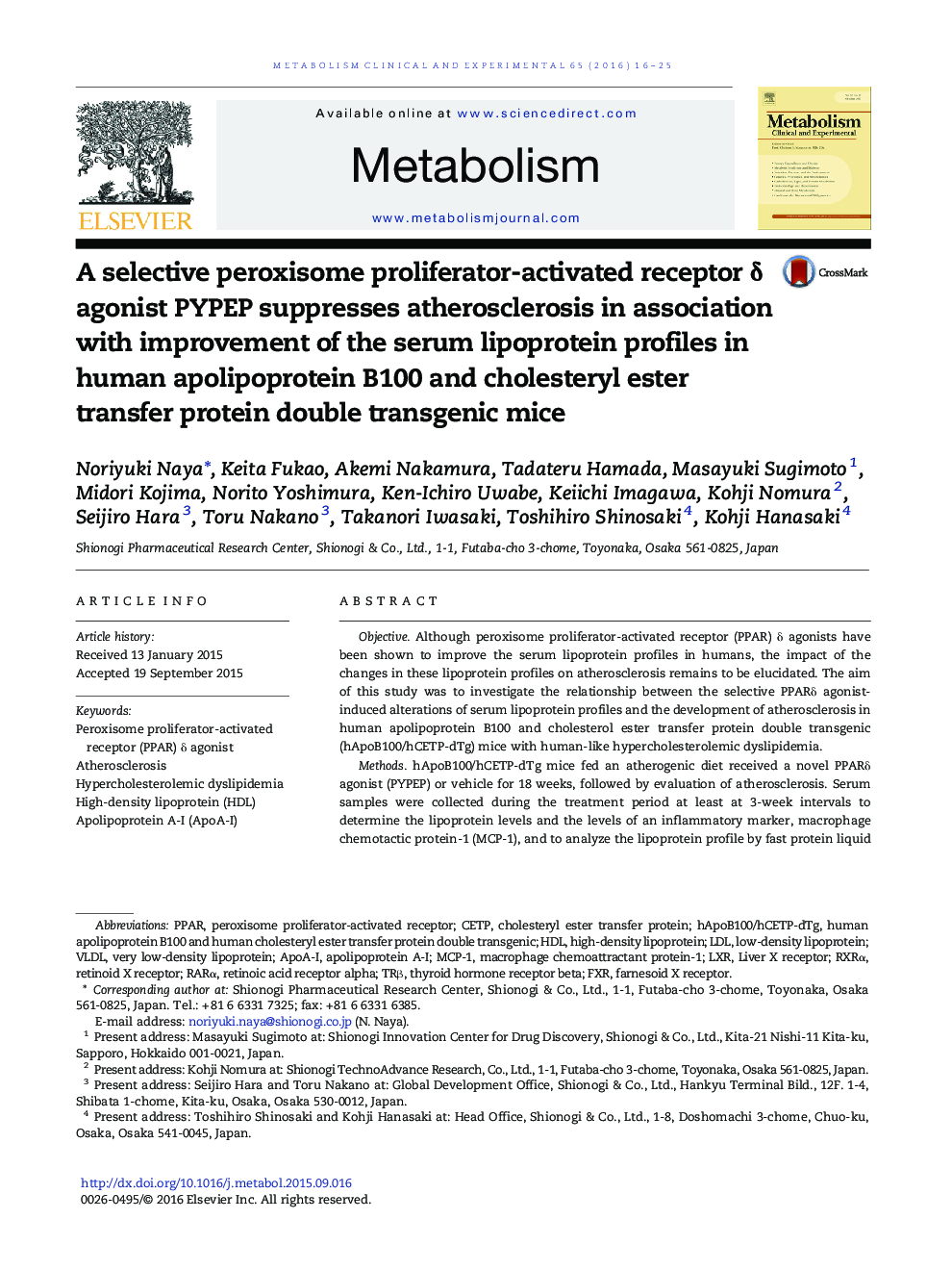| Article ID | Journal | Published Year | Pages | File Type |
|---|---|---|---|---|
| 2805603 | Metabolism | 2016 | 10 Pages |
ObjectiveAlthough peroxisome proliferator-activated receptor (PPAR) δ agonists have been shown to improve the serum lipoprotein profiles in humans, the impact of the changes in these lipoprotein profiles on atherosclerosis remains to be elucidated. The aim of this study was to investigate the relationship between the selective PPARδ agonist-induced alterations of serum lipoprotein profiles and the development of atherosclerosis in human apolipoprotein B100 and cholesterol ester transfer protein double transgenic (hApoB100/hCETP-dTg) mice with human-like hypercholesterolemic dyslipidemia.MethodshApoB100/hCETP-dTg mice fed an atherogenic diet received a novel PPARδ agonist (PYPEP) or vehicle for 18 weeks, followed by evaluation of atherosclerosis. Serum samples were collected during the treatment period at least at 3-week intervals to determine the lipoprotein levels and the levels of an inflammatory marker, macrophage chemotactic protein-1 (MCP-1), and to analyze the lipoprotein profile by fast protein liquid chromatography. The cholesterol efflux capacity of high-density lipoprotein (HDL) was examined using [3H]-cholesterol labeled macrophages.ResultsCompared with vehicle treatment, PYPEP treatment caused increases in the serum levels of HDL cholesterol and apolipoprotein A-I (ApoA-I), as well as reductions in the serum non-HDL cholesterol and MCP-1 levels. The HDL fraction from the PYPEP-treated group maintained its cholesterol efflux capacity and showed an increased population of smaller HDL particles. PYPEP substantially suppressed atherosclerotic lesion progression, and the lesion areas had significant correlations with non-HDL cholesterol, HDL cholesterol, ApoA-I and MCP-1 by Pearson’s correlation analysis. A multiple regression analysis revealed that non-HDL cholesterol and ApoA-I were significantly associated with the atherosclerotic lesion area.ConclusionA novel PPARδ agonist, PYPEP, suppressed atherosclerotic lesion progression by improving the serum lipoprotein profiles, including increased levels of ApoA-I and functional HDL particles, as well as a reduced non-HDL cholesterol level, in hApoB100/hCETP-dTg mice with human-like hypercholesterolemic dyslipidemia.
